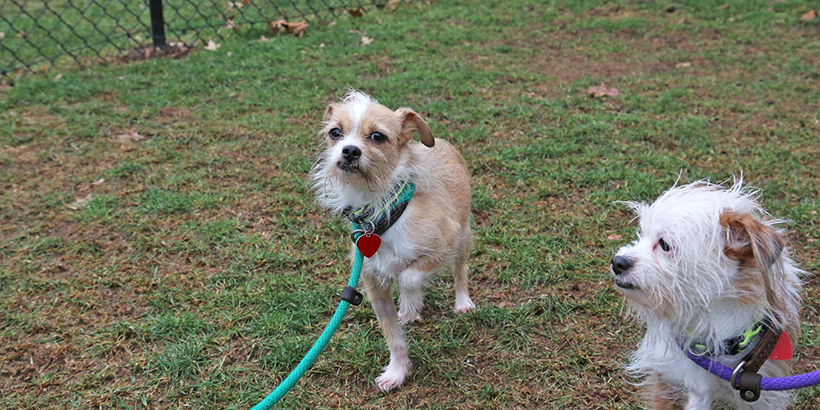
Follow the tips below to prepare you and your dog for play dates with other dogs.
Matching up
- Spayed or neutered dogs are typically better candidates for group play. This way there’s less hormonal tension.
- Similar age, size, and play style is ideal. If your dog likes to play rough, he could accidentally injure a smaller or more timid dog. Alternatively, he might provoke a less tolerant dog to aggress.
Introducing new dogs
- Start with a parallel or linear walk. Parallel walks have the dogs side by side at a comfortable distance. Over the course of 5 minutes, the dogs are allowed to walk more closely together until they are comfortable walking within 2-3 feet of one another. Linear walks have the dogs walking single file while periodically switching out the leader and gradually moving closer to one another once both dogs appear calm and relaxed. This allows the dogs to be in each other’s presence before meeting face to face.
- If the dogs aren’t territorial or have a history of barrier aggression, fences can also be used to introduce dogs safely.
Playing or fighting?
Observe body language closely.
- Playing dogs may display: soft eyes, ears back, open mouth, loose and wiggly bodies, play bows, paw lifts, elbow bending, tail neutral to low position (possibly with long, sweeping wags), mouthing, nibbling, brief pauses and “popping” movements.
- Dogs about to fight may display: hard eyes (bulging with the whites showing), ears forward and alert, wrinkled lips, bared teeth, growling, stiff body, hackles up, head/tail remain high, repeated mounting attempts, avoidance, escape attempts, hiding or constant chasing with no switching roles.
- Dogs don’t have to be biting each other to be fighting. Always err on the side of caution and separate or give time-outs when you feel uncomfortable.
Tips
- Have at least one handler per dog when two new dogs are being introduced, and keep leashes dragging until you’re sure everyone is getting along.
- Take breaks, even when things are going well, and reward the dogs for looking at you and coming to check in.
- Never force the interaction. Let the dogs set the pace.
- Be prepared to separate or intervene if necessary. Pull away using the leash or use an air horn, whistle, water, etc., to separate fighting dogs. NEVER put yourself between fighting dogs.

